Supposedly, the sunny universe of Star Trek is all about exploring outer space, meeting interesting alien cultures, and coming up with peaceful, contemplative solutions to important problems, usually while sitting in a comfortable chair. But, if you only look at the very best episodes of Star Trek, it’s very clear the franchise isn’t about strange new worlds, but instead, exploring screwed up terrible ones. Stand-out episodes of all versions of Trek tend to create trippy scenarios that would make the weirdest Black Mirror episode blush. In other words, the best episodes of Star Trek are almost always exceptions to the supposed rule that Trek is a hopeful vision of the future full of people holding hands and loving each other even if they are a space hedgehog named Neelix.
Buy the Book
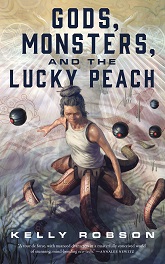

Gods, Monsters, and the Lucky Peach
If you pretend you don’t know anything about the Federation, Gene Roddenberry’s rules about no-conflict in Starfleet, and just look at what the hell is going on in the most beloved episodes of Trek, it’s very obvious the best sci-fi TV series of all time out-Black Mirrors Black Mirror constantly. Here are nine examples of standout Trek episodes from the original series through Discovery that prove it’s just as dark and intellectual than the supposedly darkest contemporary science fiction.
“City on the Edge of Forever”
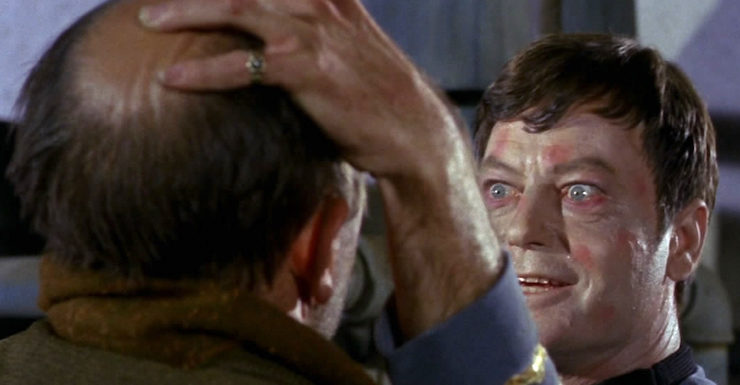
(Original Series, Season 1, Episode 28)
Written by the cantankerous (and controversial) Harlan Ellison, this Trek episode involves Bones overdosing on drugs, an alternate version of Earth ruled by Nazis, and Captain Kirk realizing he has to let the woman of his dreams (a social worker) get hit by a truck to save the timeline. Spock also wears a beanie. For decades, this episode has been voted the very best installment of the original series and it’s dark as shit. It also ends with Kirk just saying “let’s get the hell out here.”
“The Enemy Within”

(Original Series, Season 1, Episode 5)
In this episode, a futuristic piece of technology (the transporter) reveals an ugly side of human nature. Turns out, really nice people have jerky, aggressive tendencies. Nearly every single episode of Black Mirror uses this exact equation to create drama: technology+weird quirk human behavior = crazy fucked up shit. Countless Trek episodes after “The Enemy Within” went on to use this same recipe, but in many ways, the one in which Good Kirk and Evil Kirk have to hug it out is the best.
“The Inner Light”
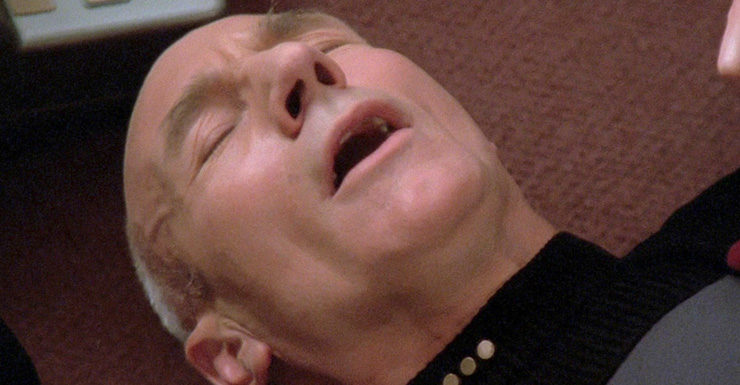
(The Next Generation, Season 5, Episode 25)
The greatest and most subtle episode of The Next Generation is nothing like any other episode of The Next Generation. In fact, it’s basically the precursor to the Black Mirror episode “San Junipero,” but sort of in reverse. Instead of people on the verge of death being uploaded to the cloud, Morgan Gendel’s “The Inner Light” is all about uploading an entire society to the cloud, and then sending it out into space for some dude to relive it centuries later.
“Q Who?” / “The Best of Both Worlds” / “I, Borg,”

(The Next Generation, Season 2 Episode 16; Season 3 Episode 26; Season 5, Episode 23)
Everything about the Borg predicted not only Black Mirror, but contemporary internet culture, too. Remember the bees episode of Black Mirror, “Hated in the Nation?” That’s basically the Borg on a smaller scale. Plus, countless Black Mirror episodes from “The Entire History of You” to “Men Against Fire” focus on humans augmenting their biology with reality-altering implants. In the very first Borg episode on The Next Generation, we learned that Borg babies got bionic implants the second they were born. Marie did the same thing to her daughter in the Black Mirror episode “Arkangel.”
“The Visitor”
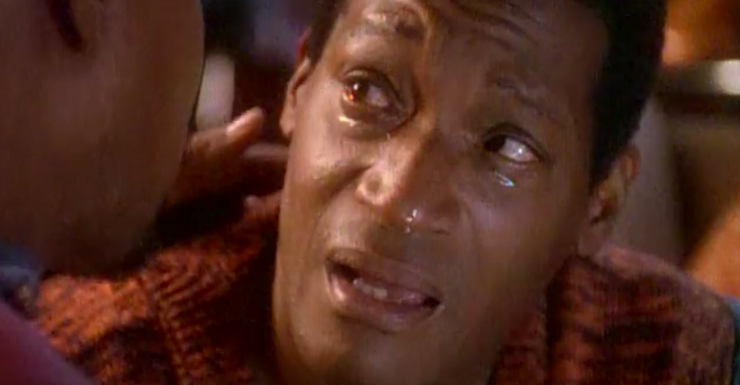
(Deep Space Nine, Season 4, Episode 2)
After young Jake Sisko sees his father sucked into a time vortex, he devotes the rest of his life to bringing his father back to life. In the process, Jake ruins his life so completely that it has to be rebooted entirely. It’s a touching episode about family, but essentially, is also a story about a man whose obsession with changing the past destroys his own future. Because it’s Star Trek, there’s a revised, slightly happier ending. Had this been Black Mirror, Jake would have just gotten steadily worse until he committed suicide. Which, in fairness, is where the DS9 episode indicates he’s headed.
“In the Pale Moonlight”
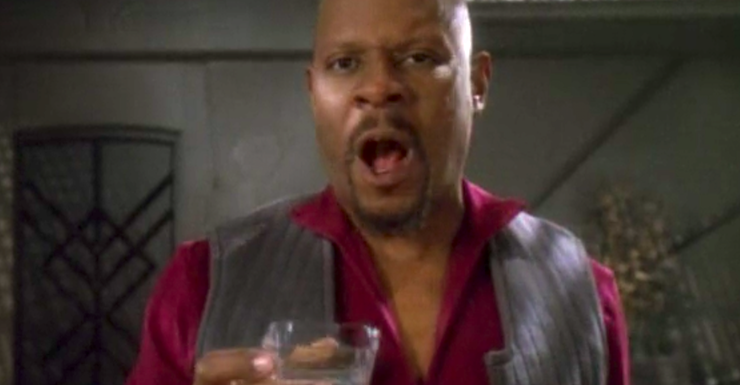
(Deep Space Nine, Season 6, Episode 19)
The ultimate parable about how the images of things matter more in power dynamics than the things themselves. When Sisko tries to fake a bunch of evidence for political reasons, he feels guilty as hell, but he basically goes through with all of it anyway. This episode is the perfect Black Mirror premise because it specifically relies on technology (mostly holograms) being used to influence people’s belief in what is and isn’t real. When the betrayed Romulan says “It’s a FAAKKKKEEE” it’s doubly ironic. Holograms and similar technology create fakery by design, but in this case, the holographic record was a fake of a fake.
“Year of Hell”
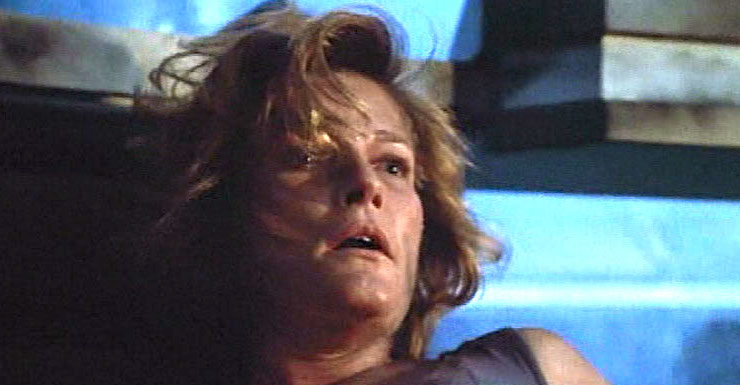
(Voyager, Season 4, Episodes 8 and 9)
The best episode of Voyager is also nothing like the rest of Voyager. Not only is this two-parter about a spaceship falling apart, and a group of people making desperate decisions to stay alive, it also features some very advanced technology that allows a culture to “edit” the history of the universe. The large scale of this Voyager episode might make you think it has nothing to do with Black Mirror, but if you think about the technology used by the Kremins, it’s similar to the drugging that happens in the Black Mirror episode “Fifteen Million Merits.”
“Demons” / “Terra Prime”

(Enterprise, Season 4, Episodes 20 and 21)
Everything about Captain Kirk’s braggadocious nature in the original Star Trek is skewered in the Black Mirror episode “USS Callister”, but the more interesting part of the episode is the tech that allows the Kirk stand-in to clone people and translate that information digitally. In Black Mirror, super-advanced genetic manipulation is mostly a cautionary tale about isolated male egos gone berserk, but in Star Trek Enterprise, gene-splicing had larger implications. In this two-parter, a xenophobic fanatic creates a hybrid Vulcan/human child in order to specifically enrage racist anti-alien humans. That’s right: an innocent baby was created in a lab as a political ploy. Talk about depraved! Why won’t Star Trek leave these poor future babies alone!
“Magic to Make the Sanest Man Go Mad”
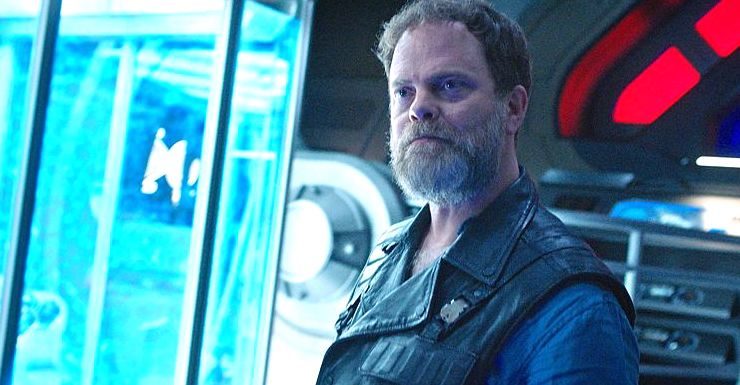
(Discovery, Season 1, Episode 7)
An insane person exploits an endangered animal in order to enact revenge and make a bunch of money. Using experimental technology, he makes a group of people relive one day over and over again until he can get what he wants. Meanwhile, the only guy who knows what is going on is also kind of a jerk and has to convince a very nervous, socially awkward person to trust him. Come on. If you take out the fact that this is set on a spaceship, the best episode of Star Trek: Discovery’s first season already sounds like a Black Mirror premise.
If you’ve never once watched Star Trek before, and you were to watch every episode on this list, you’d have a pretty good idea of what Star Trek is like. And, most interestingly, you might not end up believing it’s as upbeat and squeaky-clean as you were led to believe. But, you may end up with a different revelation; Star Trek is really fucking interesting.










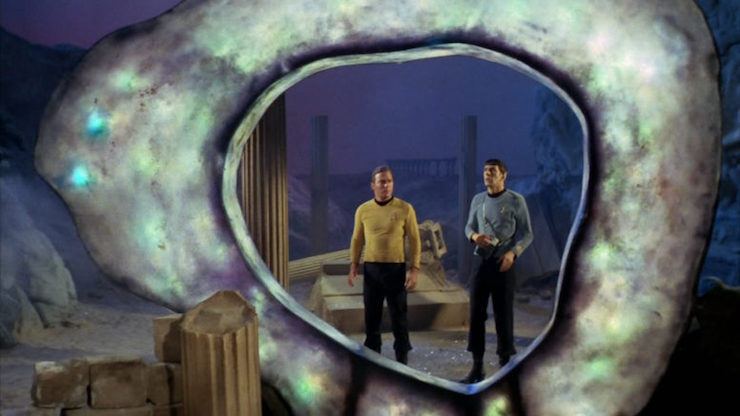
I think you meant that Harlan Ellison is “cantankerous” (def disagreeable to deal with; contentious; peevish:) not “cankerous” (def resembling a canker sore).
@1: Yeah, that feels like an odd autocorrect mistake…fixed. Thanks!
Um, that was a wool cap Spock was wearing, not a beanie. It looked precisely nothing like a beanie, plus a beanie wouldn’t do what the wool cap was being worn to do, which is keep people from seeing Spock’s ears.
This seems an odd thing to nitpick, but seriously — not a beanie!
Otherwise, though, love this article. Really need to watch Black Mirror one of these decades…..
—Keith R.A. DeCandido, who has BM on the very very very very long list of TV shows he needs to get around to watching
I always thought that what the Kremins in ”Year of Hell’ were doing was similar to how the Time War went down between the Daleks and Time Lords in Dr Who.
I think the word “dark” needs to be fleshed out a bit more here. Certainly I would consider as “dark” implying that human nature was fundamentally corrupt and evil, or that life and existence was meaningless and absurd. But what about that life is painful, sometimes tragic, and that were all going to die? Those may be precisely what are needed to make life at other times joyous and meaningful.
I’ve never watched “Dark Mirror”, so I can’t comment on that, but concerning the dichotomy between dark and upbeat/hopeful:
“The City on the Edge of Forever” is tragic, so I guess you could call it dark. But at the same time, it’s also hopeful. I think it’s one of the episodes that’s responsible for Star Trek’s utopian reputation. When Kirk and Edith Keeler talk about a time when “all the money they spend now on war and death” will be spent “on life”, we know that Kirk talks about the world he comes from.
Perhaps less profound, but also quite utopian is the fact that our action/adventure hero and elite starship captain deeply falls in love… with a social worker. Who also happens to be his boss at the time.
As for “The Enemy Within”, was there ever any doubt that really nice people have bad character traits? This episode tells us that it’s not only okay to have a dark side, but even useful, as long as it’s properly controlled. In the end, Kirk literally embraces his dark side. That’s a very hopeful message, delivered with some powerful imagery.
I find that “Where No Man Has Gone Before” is a much darker episode. It claims that really nice people (okay, Mitchell actually comes across as a bit jerky, but when you read the script you know that he was supposed to be nice) become murderous monsters when they gain supernatural powers.
“The Inner Light” is very dark, and you didn’t even mention the reason why. It’s about the slow death of a planet. There’s this whole society of incredibly sensible and nice people who never panic or become aggressive, who just quietly live out their lives in an increasingly hostile environment. They can’t save themselves, they can’t do anything but leave a message for “some dude” who may not even exist.
“I, Borg” is perfectly upbeat and hopeful. Especially when compared to “First Contact”, where Picard shoots his own people, and that Voyager episode where the Borg tell Seven that no, they didn’t kill her parents… in fact, her father is right here. Yes, he’s a Borg drone. So what?
“The Visitor” could just as well be read as a story about love and ingenuity. It even has a happy ending.
I don’t remember “Year of Hell” and haven’t watched the others.
”City On The Edge Of Forever” takes place in Depression-era America. Earth is not run by Nazis in the episode.
On a side note, I would tell anybody who has never watched Star Trek before to watch “The Devil in the Dark” and “Darmok”. Both episodes are dark and upbeat.
And “Kirk’s braggadocious nature in the original Star Trek” is largely a myth.
@7/Suzanne P: True, but the episode still “involves an alternate version of Earth run by Nazis”. Spock tells Kirk about it after watching the tricorder recording.
@6/JanaJansen,
I think it was absolutely essential that Gary Mitchell be represented as a bit of a jerk; we have to assume that his bad tendencies were being kept in check by the desire for social status in a community that valued better behavior. Truly dark would have been for Kirk to go the way of Gary Mitchell.
And yes, very positive for Kirk to fall for a social worker! :)
Upon further reflection, perhaps Ryan Brit’s point is simply that Star Trek is not the Brady Bunch. Only people who don’t watch Star Trek could think that, but same with thinking that Kirk is a womanizing braggadocio, or that Shatner is continually guilty of hammy overacting.
As always, we ask that you keep the discussion civil and constructive, and be respectful of others–disagreeing with an opinion does not warrant snide or dismissive insults or personal attacks. Our full moderation policy can be found here.
I think that The City on the Edge of Forever is hugely overrated. It’s great sci fi but it has nothing whatsoever to do with the theme of Star Trek. It’s essentially an intriguing sci fi story with the names of three random dudes crossed out and replaced with “Kirk”, “Spock”, and “McCoy” and the Edith Keeler character conjured out of thin air to serve as a sacrifice to high drama. It would have made more sense as a Twilight Zone episode. The episodes that really (IMHO) make Star Trek what it is are The Corbomite Maneuver, Operation Annihilate, Balance of Terror and The Trouble With Tribbles.
Crap, i forgot about The Devil in the Dark!
Janajansen: I agree with you about Where No Man Has Gone Before although I would point out that it is heavily implied that Mitchell starts out as a decent sort before he is zapped, and he and Kirk are close friends. Another good but irrelevant episode is Requiem for Methuselah. It’s a fascinating study but the Enterprise could be in another galaxy for all it matters. And what’s with that Zefram Cochrane character anyway? The earthman who developed faster-than-light travel? Big whoop! The Vulcans had it for centuries already!
Is There In Truth No Beauty on the other hand is a very underrated episode. Besides being packed with seven different kinds of drama, it highlights an interesting theme: sometimes the Enterprise is just delivering the mail.
Doug, since you’re posting in red, it’s possible you’re new here, in which case you might like to know that there are Star Trek TOS rewatches where episodes get discussed in a fair amount of detail.
Also when I was new here I put off registering for some time because doing so on other sites was often laborious, but it turns out here it’s extremely simple, requiring no more than an email you’re already giving them and comes with definite advantages (no captcha, being able to keep a list of your favorites, history of your comments …)
I don’t know what to make of your description of “In the Pale Moonlight”, mainly because I think it places more emphasis on the recording of the fake meeting than the episode itself does. If anything, I would argue that the rod and the recording are a part of the plot, but they’re not the whole of the plot. I’d also argue that Sisko’s guilt revolves more around the things he has to do to make it happen – bribing Quark to keep quiet when the forger causes trouble at his bar, leaning on Bashir for the bio-mimetic gel needed for the data rod – and even moreso about the deaths of Vreenak and his guards, as well as the forger, all thanks to Garak, the guy he brought in on this in the first place.
Expanding on Keleborn’s comment, this site has:
—two comprehensive TOS rewatches, one by me (https://www.tor.com/series/star-trek-tos-rewatch/), one by Torie Atkinson & Eugene Myers and Dayton Ward & David Mack (https://www.tor.com/series/star-trek-rewatch/)
—rewatches of TNG (https://www.tor.com/series/star-trek-the-next-generation-rewatch/) and DS9 (https://www.tor.com/series/star-trek-deep-space-nine-rewatch/), both by me
—reviews of each episode of Discovery as they were released, including one of “Magic to Make the Sanest Man Go Mad” (https://www.tor.com/2017/10/30/tough-mudder-star-trek-discoverys-magic-to-make-the-sanest-man-go-mad/)
I’ll stop being self-aggrandizing now. :)
—Keith R.A. DeCandido
I agree with @Doug/13. Ellison’s ire about the changes to his story shows that he knew little of the essence of Trek. It was far more powerful in a Trek sense to have Kirk’s devotion to duty override his personal desires. The final version leaves Kirk with the pain of a difficult decision…this is what it means to be the captain of the Enterprise; Ellison’s version, he’s just a lovestruck guy whose actions get thwarted…his only pain is that of loss. The whole story is like that — a non-Trek story that was rewritten to be more Trek-like.
@19/Scott Miller: I don’t agree with Doug/13, but I do agree with you :-)
IMO “The City on the Edge of Forever” is a wonderful episode, but only because of the changes. The one you mentioned and others. For example, Ellison’s script emphasises Kirk’s and Edith Keeler’s loneliness before they find each other; in the final episode, they fall in love because they “speak the same language”, share the same values. “Let me help” could be seen as the original Star Trek’s mission statement; it isn’t in Ellison’s script. His version is also more mystical than the aired episode: Spock doesn’t build a computer, they find Edith Keeler because of a cryptic prophecy by the Guardian.
Ellison delivered the backbone of a good SF story, but it needed the changes to become a great Trek episode.
What curmudgeons like me call a watch cap or a ski cap or something (“tuque” if you’re Canadian), US kids these days call a beanie. I don’t understand where the usage came from, but it is all over now and there’s nothing to be done about it.
@21 Looking at the size of the hat Spock was wearing, I’d have to quote Kenobi: “That’s no beanie.”
I’ve been arguing for years that TOS is way darker than most people remember or realize. There was no shortage of tragedy and horror on the Final Frontier, and many classic episodes end on somber notes:
“The Cage,” “Charlie X,” “Balance of Terror,” “Conscience of the King,” etc.
#20
The highlight of my existence is the day I got to meet Ellison and tell him I thought the altered version of City on the Edge of Forever was better.
I honestly thought for a moment he was going to try to strangle me.
Re: the Visitor – it’s not implied he’s headin for suicide, Jake figures out the only way to save his Dad Ben is to take his own life while Ben is present. Which he does, and this resets the timeline. Eat it’s not a dark act, it’s a sacrifice he’s made in the hope it makes things better.
All of the series (including Disco) are optimistic – despite the lighting choices. They aren’t filled with the bleakness Dark (for me, at least) requires. From all I’ve heard of Black Mirror, even the most optimistic episodes never rise above bleak.
Full disclosure: I’ve never watched Black Mirror. Like everyone else, my time is limited, so when I chose something to spend that time on, I want something that helps me believe that most people want things to get better, and (in an imperfect, flawed way) with stumbling steps they’ll get that better future. From what everyone says, Black Mirror is not that kind of show. Obviously people’ mileage varies. All power to you if your escapism is into worlds that are more dour than our own.
Yes, Star Trek can go to some pretty dark places – without that there’d be no drama. But anyone wanting to watch them because they’re looking for a dark setting is going to be disappointed. Even at its most bleak, Star Trek is full of light and hope. Take Discovery at the beginning it’s dark – both in lighting and in how bleak it is. Yet ultimately the theme for me was how it reaffirmed the Federation’s principles. Pushed until their back was to the wall, they had the option to save themselves by committing genocide. Instead they chose to trust in the faith of their enemy, using the knowledge they’d gained for everyone’s benefit. Then we’re rewarded for it. That’s not dark at all.
@krad
Your observation in #3 is something that puzzles me, too. By context, I think that some people use “beanie” as a the proper name for what I call a “watch cap”, a knitted hat meant to cover the ears in cold weather. I keep several around for winter. All languages change over time, regardless of our desires. I agree with you, and I don’t know why this change is taking place.